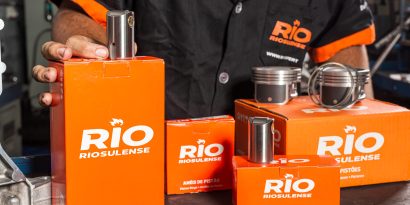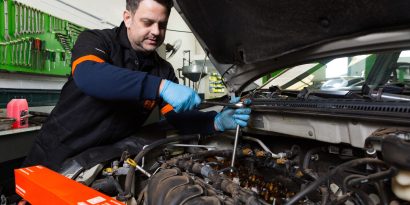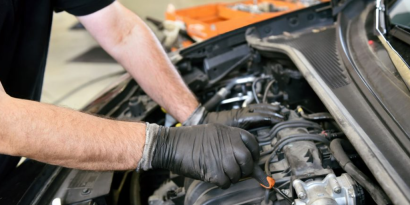Those who follow the automotive market trends know that, over the decades, the search for reducing the emission of pollutants and fuel consumption and increasing vehicle performance were largely responsible for the main technological transformations in this sector – as an example, we can mention the piston rings. When it comes to engine downsizing, the mission isn’t different at all!
Going straight to the point, this trend, which is gradually consolidating in automakers around the world, involves reducing the size of the engine to improve the efficiency of the car as a whole. The central idea consists of maintaining the power, torque and throttle response so that the driver doesn’t feel that an eventual fuel economy comes, for example, associated with the car’s lack of agility. This is where we can start talking about the 3-cylinder engines.
The role of the 3-cylinder engine
First of all, bear in mind that this process receives the same name all over the world, being unchanged from one language to another. Also, in many cases, the concept of engine downsizing is misunderstood: does it mean that your car’s engine will get smaller, with smaller parts and with reduced power? It is not quite like that.
Even because the technology of downsizing, despite being increasingly popular, is not necessarily new for those who deal with automotive engineering. Instead of creating “miniature engines”, the concept is more related to the development of solutions capable of delivering more with less. This is the case with 3-cylinder engines.
Taking this conversation straight to the mechanic shop and adopting our good and old English, the idea of creating an engine without the 4 standard cylinders is to present a car that “drinks” less fuel to the market. Just do the math: if there is a smaller amount of fuel being burned, the emission of pollutants decreases, as well as the consumption of gasoline, alcohol and other fuels.
In addition, this type of engine, with its more modern rearrangement, delivers other benefits felt throughout the life of the vehicle, such as the reduction of total weight and internal friction. Everything is very fascinating and innovative, it is true. But, in this whole scenario, does the performance decrease? After all, a 3-cylinder engine is unable to deliver the performance and speed of a 4-cylinder engine, right?
A few years ago, maybe that was really true. Even because, for a long time, the power and torque of automobile engines were directly linked to greater literacy and the number of cylinders. Generally, a “bigger” engine was more powerful than a “smaller” engine. However, the scenario changed with the arrival of the turbocharger and direct fuel injection, technologies that have given new horizons for the downsizing of engines.
Downsizing: after all, what changes?
Let’s do it step by step. First things first, it is worth remembering that the compression inside the engine cylinders is, in the end, the main responsible for determining the power of the vehicle. Inside the cylinders, when the piston presses the mix of air and fuel, the amount of pressure applied before the explosion will determine the force that the piston will be pushed, giving movement to the car.
That is why, with the turbocharger technology, this set has become the real beating heart behind the downsizing of the engines. The turbo uses the gases expelled from the engine exhaust to run a pair of turbines that are directly connected to a compressor.
It works like this: the gases generated by the operation of the engine cause the turbine to rotate automatically. The more it rotates, the greater the amount of air that will be pushed into the intake system.
This air, in turn, will increase the compression inside the combustion chambers, requiring more fuel to burn. The result is an increase in the power generated by the engine. Generally, when using turbos, the pressure used is defined.
The greater the pressure, the greater the power drawn. This feature, added to the constant evolution of direct injection technologies, makes it possible for the 3-cylinder engine to behave as efficiently as its bigger brothers do.
And if you concluded that all these changes are going to demand more and more quality from engine parts and components, your thinking couldn’t be more correct! After all, this has always been the imperative dynamic in the automotive industry: while automakers develop technologies to simplify and streamline the driver’s routine, foundries and metallurgists invest heavily in innovation to create components to match them!
That’s how it works at RIO! With multidisciplinary teams, cutting-edge engineering and innovative processes, we create motion to develop quality solutions on a daily basis, with guarantee of origin and superior durability. For more information, why don’t you pay a visit to our website and access the automotive replacement portfolio in order to find out how we can contribute to your project?





